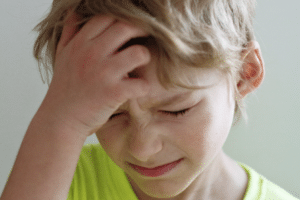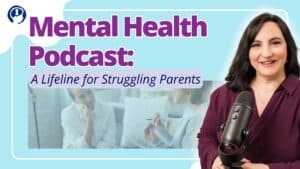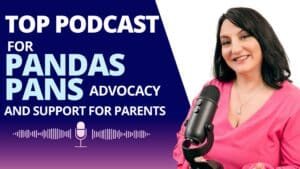Children and teenagers struggling with Attention Deficit Hyperactivity Disorder (ADHD) are no strangers to the daily hurdles and occasional triumphs in their journey. To better manage this neurodevelopmental disorder, we have to first learn about what people with ADHD look like in daily life. There are various ADHD types, and it's important to know about them to find the right treatment plan.
Parents must grasp the foundational knowledge of the three primary classifications of ADHD. These serve as the cornerstones for understanding the intricate landscape of these mental health conditions:
ADHD Type 1: Inattentive Type
Inattentive ADHD, also referred to as Predominantly Inattentive Presentation and Attention Deficit Disorder, introduces us to a unique world of cognitive processing. It's a profile where the mind seems to wander, explore, and, at times, disconnect from the task at hand.
Children and teenagers with Inattentive Type ADHD struggle with the inability to pay attention, organize thoughts, and maintain focus over extended periods.
This type often highlights the importance of understanding the subtleties in a child's cognitive journey. It's not about a lack of intelligence or willpower, but rather a distinctive way of navigating the world. Inattentive Type ADHD affects various aspects of daily life, from academic tasks to interpersonal relationships.
We often think that “just being inattentive” isn’t as impactful but the reality is that it can impact all areas of a child’s life. Recently, I worked with a teen named Karl that would lose focus after 10 or 15 minutes and just couldn’t regain his attention. It wasn’t until he did neurofeedback was he able to pay attention for long periods of time.
To support children and teens with Inattentive Type ADHD, creating an environment that accommodates their unique cognitive style is essential. It may involve breaking tasks into manageable segments, offering gentle reminders, and providing opportunities for structured organization.
Recognizing the potential and nurturing the strengths of these children is equally vital. After all, many creative thinkers and visionaries have traversed this path, bringing unique perspectives to the world.
Symptoms of Predominantly Inattentive Presentation ADHD
- Inability to pay attention or difficulty sustaining attention on tasks or activities
- Frequent careless mistakes in schoolwork or other activities
- Struggles with organizing and prioritizing tasks and activities
- Avoids or is reluctant to engage in tasks that require sustained mental effort
- Frequently loses items necessary for tasks and activities (e.g., school supplies, keys)
- Easily distracted by external stimuli or unrelated thoughts
- Forgetful in daily activities, such as appointments or obligations
- Challenges in following through on instructions, chores, or schoolwork
- Poor time management and attention to detail
- Often appears as if not listening when directly spoken to
- Fails to complete school assignments or tasks at work
Strategies for Managing ADHD Type 1: Inattentive Type
Here are some tips for managing ADHD Type 1, Inattentive Type, that can be helpful for both parents and children or teens with this condition. Note that the symptoms of inattention are much more prevalent in girls than in boys (McGee & Feehan, 1991).
1. Build a Structured Routine
Establish a structured daily routine and stick to it as closely as possible. A predictable schedule can help individuals with ADHD Type 1 stay on track and manage their time effectively. Doing this may also prevent anxiety disorder onset in older children.
2. Focus on Task Organization
Use tools like to-do lists, planners, or digital calendars to keep track of tasks and homework. These tools will also help address an ADHD kid's short attention span. Break down larger tasks into smaller, manageable steps to prevent feeling overwhelmed.
3. Create Visual Reminders
Creating visual cues and reminders, such as sticky notes or visual schedules, is the best way to help young children remember daily tasks and important deadlines. Family members create these visual reminders to counter inattentive ADD symptoms.
4. Teach Time Management
Teach time management skills, including estimating how long tasks will take and setting timers or alarms to stay on track. This life skill is going to prepare them for adulthood as they learn to manage the challenges of everyday life.
5. Minimize Distractions
Create a quiet, distraction-free workspace for tasks that require focus. Consider noise-canceling headphones or soft background music to help maintain concentration. Some ADHD kids experience a significant impairment in their sensory perception (Clince et al., 2016).
6. Allow Regular Breaks
Schedule short, regular breaks during tasks to prevent mental fatigue. Quick breaks can help recharge attention and motivation among school-aged children with a diagnosis of ADHD (Baker, 2005).
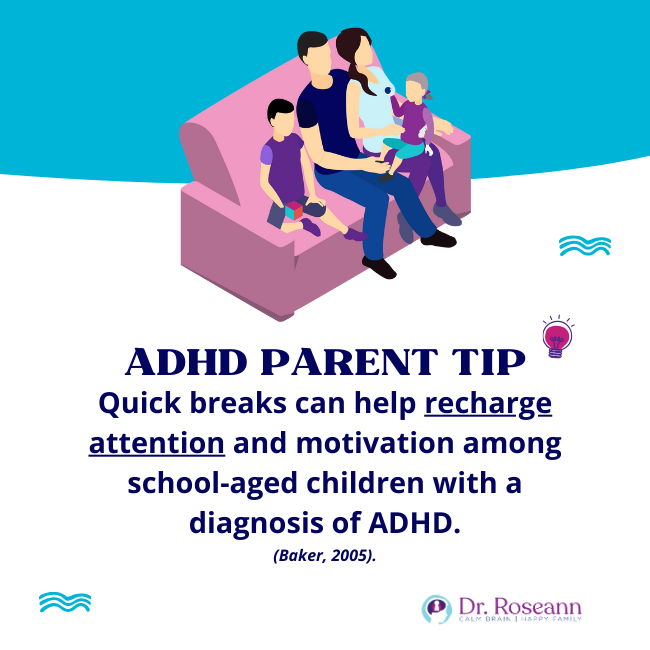
7. Set Realistic Goals
Set achievable, realistic goals for tasks and assignments. Celebrate small victories and progress to improve their low self-esteem and build motivation.
8. Provide Positive Reinforcement
Use positive reinforcement and rewards to motivate children with ADHD to complete tasks and maintain focus.
9. Encourage Open Communication
Encourage open communication and support within the family or academic environment. Creating a safe space for discussing challenges and seeking help is essential.
10. Seek Professional Guidance
Consider consulting healthcare providers or mental health professionals who specialize in ADHD. They can offer guidance on tailored strategies and treatment options.
ADHD Type 2: Hyperactive-Impulsive Type
ADHD Type 2, known as the Hyperactive-Impulsive Type, is about boundless energy and impulsivity. Children with this ADHD presentation may find it challenging to remain still or resist the urge to act on their impulses. Their actions and decisions can be rapid and impulsive, often leading to engaging but sometimes risky behaviors.
This ADHD type often characterizes individuals who are always on the move, seeking excitement, and often displaying exuberance in their daily activities. It's crucial to recognize that their impulsive behavior is not necessarily driven by a lack of control but rather a unique way of interacting with the world.
To support children and teenagers with Hyperactive-Impulsive Type ADHD, creating an environment that channels their energy constructively is vital. Structured activities, physical outlets, and opportunities for skill-building can help harness their dynamism. It's equally important to support their mood and stress management in the face of challenges
Symptoms of Predominantly Hyperactive-Impulsive Presentation ADHD
Here are the symptoms of Predominantly Hyperactive-Impulsive Presentation of ADHD. Understanding them is crucial for providing appropriate support and guidance to individuals with this ADHD type.
- Difficulty sitting still or remaining in one place
- Frequent fidgeting, tapping, or restlessness
- Inclination to interrupt or intrude on others' conversations or activities
- Tendency to act impulsively without considering consequences
- Impatience, often struggling with delayed gratification
- Rapid, impulsive decision-making that may lead to risky behaviors
- Difficulty waiting for one's turn in activities or conversations
- Tendency to blurt out answers or thoughts before others finish speaking
- May engage in excessive physical activity, even in inappropriate settings
- Restless or constant on-the-go behavior, as if driven by a motor
Strategies for Managing ADHD Type 2: Hyperactive-Impulsive Type
Here are some helpful strategies for addressing ADHD Type 2 (Hyperactive-Impulsive Type) in children and teens:
1. Create a Structured Routine
Establish and maintain a consistent daily routine to provide a sense of predictability and structure.
2. Engage in Physical Activities
Encourage regular physical exercise to help channel excess energy and improve focus. Activities like sports, dance, or martial arts can be particularly beneficial.
3. Practice Mindfulness and Relaxation
Teach relaxation techniques and mindfulness practices to help individuals with Hyperactive-Impulsive Type ADHD manage impulsivity and reduce stress.
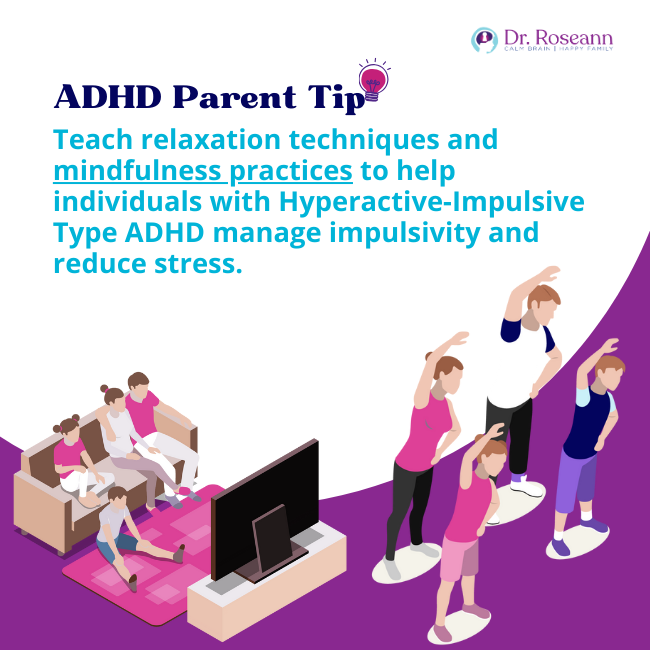
4. Limit Distractions
Create a quiet, organized workspace to minimize external distractions and enhance concentration.
5. Provide Positive Reinforcement
Implement a reward system to motivate and reinforce positive behaviors and impulse control. Make sure to reinforce desired behaviors.
6. Promote Skill Building
Provide opportunities for skill-building in areas such as impulse control, emotional regulation, and decision-making.
7. Use Behavioral Therapy
Consider behavioral therapy, such as cognitive-behavioral therapy (CBT) or dialectical behavior therapy (DBT), to address impulsive behaviors and improve self-control.
8. Offer Parent and Family Support
Seek support and guidance from professionals who specialize in ADHD. These experts can offer strategies for managing and providing support.
9. Practice Effective Communication
Encourage open communication within the family and academic environment, fostering a supportive space for discussing challenges and seeking help.
10. Ensure Healthy Diet and Nutrition
Pay attention to dietary choices. A balanced diet can influence mood and behavior. Reducing sugar and processed foods may be beneficial. Be wary of adding too much sugar to your child’s diet as it can exacerbate the symptoms of ADHD.
11. Observe Good Sleep Hygiene
Ensure individuals get enough sleep, as adequate rest can improve impulse control and overall well-being.
12. Perform Social Skills Training
Consider social skills training to help individuals navigate social interactions more effectively and manage impulsive responses. Improving your kid's confidence in handling social situations is the first step in seeing a positive change in your child’s behavior.
13. Set Realistic Goals
Help individuals set achievable, realistic goals for their tasks and activities. Break down larger tasks into smaller, manageable steps.
14. Encourage Creativity
Support creative outlets, such as art, music, or writing, which can provide a constructive way to express energy and emotions.
ADHD Type 3: Combined Type
ADHD Type 3, often referred to as Combined Type, represents a multifaceted landscape where symptoms of hyperactivity, impulsivity, and inattention coexist. Children and teens with this presentation may experience a blend of challenges, encompassing difficulties in focusing, organization, impulse control, and restless energy.
Their journey through life can involve the intricate interplay of both these distinctive features, which may sometimes lead to complexities in various aspects of daily living. Many of the children I work with exhibit a combination of trouble with focusing and impulsivity. It often affects them both at school and home.
This combined profile showcases the need for a nuanced approach to understanding and supporting children and teens with ADHD. The presence of symptoms from both domains requires tailored strategies that address the unique combination of characteristics.
It's essential to recognize the potential and strengths within these individuals, as the blend of traits in Combined Type ADHD can also bring a range of creative thinking and adaptability to different situations.
To provide support to children and teenagers with Combined Type ADHD, fostering a holistic environment that accommodates both inattention and hyperactivity-impulsivity is key. This may include structured routines that offer predictability while allowing room for bursts of energy, as well as teaching strategies for impulse control and focus. In the following sections.
Symptoms of Combined Type ADHD
The symptoms of ADHD Type 3 are also a combination of the symptoms of ADHD Type 1 and Type 2. According to the American Psychiatric Association (2013) Diagnostic and Statistical Manual of Mental Disorders, Fifth Edition (DSM-5), to qualify for Combined Presentation ADHD Type 3, an individual should exhibit a total of six or more symptoms from both the inattention and hyperactivity-impulsivity domains, typically totaling 12 or more symptoms in total. The severity of symptoms and the degree of impairment they cause in daily life are also considered in the diagnosis.
Strategies for Managing ADHD Type 3: Combined Type
Managing ADHD Type 3, Combined Presentation, involves addressing symptoms from both the inattentive and hyperactive-impulsive domains. While the specific symptoms may vary from one individual to another, it's helpful to consider a combination of strategies used for ADHD Type 1 and Type 2. These combined strategies can be effective in managing ADHD Type 3, as they encompass a wide range of symptom profiles.
However, remember that managing Combined Presentation ADHD is an ongoing process that requires flexibility in implementing strategies to address the specific needs of your child. A consultation with a healthcare provider experienced in ADHD can provide tailored guidance and support based on the unique symptom profile of each person with ADHD Type 3.
Treatment Options for Different Types of ADHD
Not all parents know that there’s a spectrum of treatment options, with a particular focus on holistic, natural approaches that can boost brain health, enhance mood, alleviate stress, and manage behavior.
The BrainBehaviorResetTM Program is a comprehensive and innovative treatment plan designed to empower children with ADHD to unlock their full potential. This program is tailored to provide a holistic and effective solution, combining the latest research in ADHD management with a focus on individualized support.
In this program, we recognize that children with ADHD are not defined by their condition but are vibrant, creative individuals with untapped talents. Our approach is rooted in understanding and addressing the core neurobiological aspects of ADHD while also harnessing the strengths and unique qualities of each child. It aims to foster a sense of self-esteem and self-efficacy by helping children and their families navigate the complexities of ADHD.
The BrainBehaviorResetTM Program offers a range of tools and strategies, including educational resources, natural therapy such as neurofeedback and PEMF, personalized support, magnesium supplementation, and a nurturing environment.
By resetting and rewiring cognitive processes and behavior patterns, children can gain greater control over their attention, impulses, and behaviors, ultimately leading to improved academic performance, stronger relationships, and enhanced self-confidence.
Whether your child's ADHD leans toward inattention, hyperactivity, or a combination of both, there are strategies to enhance their quality of life, manage their mood and stress, and navigate their unique behavior. With the right knowledge and the right support, you can create a world where the distinctive qualities of ADHD shine.
Parent Action Steps
☐ Identify your child's specific ADHD type.
☐ Consult a professional to diagnose ADHD accurately.
☐ Explore available treatment options, such as natural science-backed therapies.
☐ Establish a structured daily routine.
☐ Continue to educate yourself about ADHD.
☐ Maintain open and honest communication with your child.
☐ Advocate for your child's needs at school and elsewhere.
☐ Connect with support groups for insights and shared experiences.
☐ Celebrate your child's achievements, big or small.
☐ Stay patient and persistent in your support.
☐ Prioritize self-care to better help your child.
☐ Take this ADHD Quiz to know if your child has ADHD or something else.
☐ Use the Solution Matcher to get personalized treatment for your child.
Citations
American Psychiatric Association. (2013). DSM-5 TM Guidebook The Essential Companion to the Diagnostic and Statistical Manual of Mental Disorders, Fifth Edition (5th ed.). Washington, Dc American Psychiatric Publishing.
Baker, T. C. (2005, June). The use of mini-exercise breaks in the classroom management of ADHD -type behaviors – ProQuest. Www.proquest.com. https://www.proquest.com/openview/f50669611f41fcb8cc67e9b9046b5208/1
Clince, M., Connolly, L., & Nolan, C. (2016). Comparing and Exploring the Sensory Processing Patterns of Higher Education Students With Attention Deficit Hyperactivity Disorder and Autism Spectrum Disorder. American Journal of Occupational Therapy, 70(2), 7002250010p1. https://doi.org/10.5014/ajot.2016.016816
McGee, R., & Feehan, M. (1991). Are girls with problems of attention underrecognized? Journal of Psychopathology and Behavioral Assessment, 13(3), 187–198. https://doi.org/10.1007/bf00960783
Are you looking for SOLUTIONS for your struggling child or teen?
Dr. Roseann and her team are all about science-backed solutions, so you are in the right place!
Grab your complimentary copy of
147 Therapist-Endorsed Self-Regulation Strategies for Children: A Practical Guide for Parents
You can get her books for parents and professionals, including: It’s Gonna Be OK™: Proven Ways to Improve Your Child’s Mental Health, Teletherapy Toolkit™ and Brain Under Attack: A Resource For Parents and Caregivers of Children With PANS, PANDAS, and Autoimmune Encephalopathy.
If you are a business or organization that needs proactive guidance to support employee mental health or an organization looking for a brand representative, check out Dr. Roseann’s professional speaking page to see how we can work together.
Dr. Roseann is a Children’s Mental Health Expert and Therapist who has been featured in/on hundreds of media outlets including, CBS, NBC, FOX News, PIX11 NYC, The New York Times, The Washington Post, Business Insider, USA Today, CNET, Marth Stewart, and PARENTS. FORBES called her, “A thought leader in children’s mental health.”

She is the founder and director of The Global Institute of Children’s Mental Health and Dr. Roseann Capanna-Hodge, LLC. Dr. Roseann is a Board Certified Neurofeedback (BCN) Practitioner, a Board Member of the Northeast Region Biofeedback Society (NRBS), Certified Integrative Mental Health Professional (CIMHP) and an Amen Clinic Certified Brain Health Coach. She is also a member of The International Lyme Disease and Associated Disease Society (ILADS), The American Psychological Association (APA), Anxiety and Depression Association of America (ADAA) National Association of School Psychologists (NASP), International OCD Foundation (IOCDF) International Society for Neurofeedback and Research (ISNR) and The Association of Applied Psychophysiology and Biofeedback (AAPB).
© Roseann-Capanna-Hodge, LLC 2023




